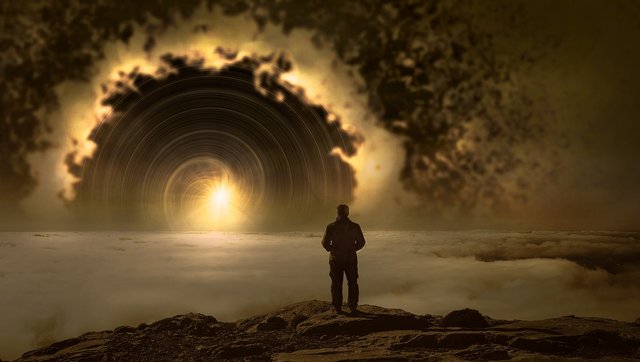In the 1970s, physicists Stephen Hawking and Jacob Bekenstein discovered that black holes are not stationary, but emit radiation.
This process causes the energy in the black hole to decrease over time. If its energy continues to decrease, the black hole could disappear forever.
This finding raises a big question: If the black hole disappears, what happens to all the information that has ever entered it?
Meanwhile, according to the laws of physics, information cannot be destroyed. This problem is what is known as the information paradox—which has not been solved to this day.
However, a theory called Loop Quantum Gravity (LQG) offers a solution to this paradox. The theory, which has been around since the early 1990s and continues to be developed to this day, has given rise to the idea of the possible existence of white holes, objects that may be the key to solving many unanswered questions about black holes.
However, through the LQG theory, we can understand black holes in a different way. Because space-time is considered not smooth but consists of small units, so black holes do not end at a singularity point, but at the smallest scale called the Planck Scale. Like a long bottle, but the bottom is not solid, but something that maintains the smoothness of space.
Another analogy, imagine a black hole like a vacuum cleaner that sucks everything in. In the theory of general relativity, what goes into the vacuum cleaner will be stored inside forever.
However, in LQG, this vacuum cleaner does not completely suck to the end, but has an "exit" on the other side, where what is sucked in can come out again, through a white hole.
This theory provides the possibility that information lost in a black hole can come out through a white hole, thus resolving the information paradox.
Simply put, a black hole is like a vacuum cleaner that pulls everything in, while a white hole is a blower that blows everything out.
Scientists predict that black holes and white holes are connected through a tunnel called.
Like Sisyphus in Greek mythology who was punished by Zeus to perform an endless task, this cycle between black holes and white holes could be a manifestation of a cosmic cycle that repeats itself in the universe.
Big-Bounce and GRB 060614
LQG also introduces the concept of the big-bounce as an alternative to the Big Bang theory. According to this theory, the universe did not start from a singularity, but rather underwent a process of “super-bounce”.
In this scenario, the universe did not explode from nothingness, but shrank from a pre-existing universe, then bounced back and expanded into the universe we know today. This is similar to the prediction of how black holes can turn into white holes, reflecting a cosmic cycle that repeats itself continuously.
However, the solutions proposed by LQG of course still have to pass the test of astrophysical observations.
One phenomenon that is considered to be evidence of a white hole is the gamma-ray burst (GRB 060614) observed by the Neil Gehrels Swift Observatory team that was detected in the Indus constellation in 2006. Some scientists speculate that this event may be related to a white hole.
However, this is still just a hypothesis. Most scientists are more inclined to the explanation that the gamma-ray burst occurs due to the collapse of matter around the black hole.
The challenge of observing white holes
So, although the concept of a white hole is theoretically interesting, there is no direct evidence for its existence. We have succeeded in observing black holes through gravitational wave detectors such as the Laser Interferometer Gravitational-wave Observatories (LIGO) and the Event Horizon telescope (EHT). Meanwhile, detecting white holes will be very difficult.
If white holes are the result of the evaporation of black holes, the process takes an incredibly long time, about 10{67} years or more than 10 octodecilians—a very long time compared to the age of the universe, which is only about 10{10} years or 13.8 billion years.
This comparison shows how unlikely it is to detect a white hole in the near future.
However, the prediction of the existence of this white hole has given hope for resolving many of the problems left by the classical black hole theory.
Further research on this theory and supporting astrophysical observations must continue to be carried out.
In the future, the LQG theory still faces major challenges in answering questions related to the existence of white holes. Theoretically, physicists find it difficult to bet on the existence of white holes because they tend to be unstable due to the release of matter contained in them.
Although many experts doubt the existence of white holes, history shows that views on black holes were also filled with skepticism in the 1960s.
It is possible that GRB 060614 was the first indirect detection of a white hole. This is similar to the initial observation of the Cygnus X-1 black hole in 1964, which was initially considered speculative before eventually being accepted as strong evidence for the existence of black holes.

Downvoting a post can decrease pending rewards and make it less visible. Common reasons:
Submit